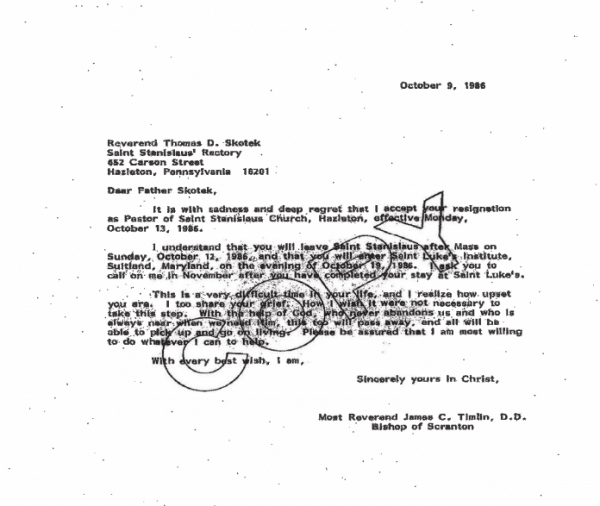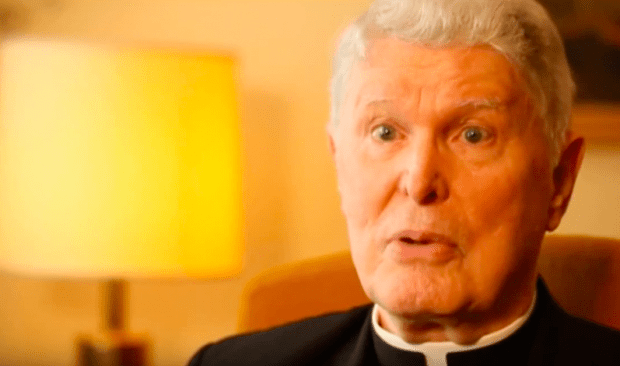I know y’all are worn out by all my takes on the Catholic abuse scandal, but if you can stand it, Megan McArdle’s column on it is worth reading. This graf jumped out at me:
There are plenty of tales to tell about how church reality came to resemble a dime novel, yet most are essentially stories of individual malfeasance, of depraved molesters seeking the camouflage of priestly celibacy. That doesn’t explain the bureaucratization of evil. For what is striking about the grand jury’s findings is that this was not simply a matter of a few bad individuals, or even many of them; what impresses and appalls is how routine it all was — that the church had, as the report says, “a playbook for concealing the truth.”
“The bureaucratization of evil” is a way of saying “the banality of evil,” which was Hannah Arendt’s term in Eichmann In Jerusalem, her famous account of the trial of the Nazi functionary. Arendt discussed how the evil that Eichmann did had become disguised by embedding it in bureaucratic procedures. Eichmann’s evil became banal through bureaucratization, which rendered it abstract. She wrote:
The essence of totalitarian government, and perhaps the nature of every bureaucracy, is to make functionaries and mere cogs in the administrative machinery out of men, and thus to dehumanize them.
A good example of this in the Pennsylvania Grand Jury report (pp. 285-90) is the way Bishop James Timlin of Scranton handled the case of Father Thomas Skotek, who impregnated a 16-year-old girl, then procured for her an abortion. Look at the anesthetizing language the bishop uses in writing to Skotek, who had done something truly monstrous. Notice the tender solicitude the bishop uses in addressing this moral reprobate (“This is a very difficult time in your life, and I realize how upset you are. I too share your grief. I wish it were not necessary to take this step.”). Any normal human being would have raged at this criminal, and jumped through hoops to defrock him. Not the Bishop of Scranton:

Here are screen shots of the letter Timlin wrote to Rome three years later, seeking to get the Vatican’s stamp of approval on returning this sex criminal and abortion-procurer to active ministry:


The priest, Skotek, raped a minor and helped her kill the unborn child resulting from that rape. This letter documents Skotek’s processing through the system — first the psychological evaluation, then the monastery, and voilà, he’s ready to help those “who need the gifts he shares in priestly ministry.”
The language here abstracts into nothingness the girl he statutorily raped, and the unborn child whose life he helped end. Justice for them does not figure into the bishop’s deliberations, for they are not real; only the priest is real. The bureaucratic language and concepts dehumanizes all but the priest. The only other apparent concern for Bishop Timlin is that somebody might find out what Father Skotek did.
In these two letters, you can see how true evil becomes bureaucratized and banalized. The Pennsylvania grand jury report is full of this. When you read the responses of those like Cardinal Donald Wuerl, who was Bishop of Pittsburgh for 18 years, and whose name is all over the grand jury report, you see the same language and mentality at work. My guess is that being embedded in the Catholic episcopal bureaucracy forms one’s mind such that it is next to impossible to think and speak otherwise.
The poet Joseph Brodsky wrote:
No matter how daring or cautious you may choose to be, in the course of your life you are bound to come into direct physical contact with what’s known as Evil. I mean here not a property of the gothic novel but, to say the least, a palpable social reality that you in no way can control. No amount of good nature or cunning calculations will prevent this encounter. In fact, the more calculating, the more cautious you are, the greater is the likelihood of this rendezvous, the harder its impact. Such is the structure of life that what we regard as Evil is capable of a fairly ubiquitous presence if only because it tends to appear in the guise of good. You never see it crossing your threshold announcing itself: “Hi, I’m Evil!” That, of course, indicates its secondary nature, but the comfort one may derive from this observation gets dulled by its frequency.
And there you have the Catholic bishops. Under the guise of good, they incarnated evil — protected it, made excuses for it, attacked those outside the church (especially its victims) seeking to combat it. As shocking as the evil deeds of corrupt Catholic priests are, they aren’t the most shocking thing here. The most shocking thing is that bishops — men who were not, presumably, driven by sexual demons, or caught up in psychological compulsions — had the power to deal firmly with these manifestations of evil, but in many cases did not.
Megan McArdle writes:
If Jesus were here today, would He not be running through American cathedrals, knocking over tables as He did with the money changers in the Temple? “According to scripture,” He said in the Gospel of Matthew, “my house will be called a house of prayer; but you are turning it into a bandits’ den.” The words are a fitting indictment of the men who are accused of committing a moral theft of unimaginable wickedness — in their thoughts and in their words, in what they did and in what they failed to do.
The innocence of children was stolen, as was the church’s sanctity and the faith of congregants, many of whom are today asking how they can possibly continue to believe that this is the one true church that Christ founded through Peter. They do not expect the church to be perfect; even St. Peter, after all, denied Christ three times. But they do expect to find the reflection of Christ there.
Yes. Christ, not Eichmann. Watch some of this video tribute Marywood University made to Bishop Timlin in 2012, and listen to him talk. He sounds about as evil as a cup of milky tea, and just as banal. But real wickedness hid behind that dull, folksy façade, as the grand jury report reveals. Thing is, it no doubt hid itself from Bishop Timlin too.
UPDATE: Reader CatherineNY comments:
I went and googled to find out more about Bishop Timlin, and found various stories about him objecting to being at events with Tip O’Neill, Chris Matthews and others because of their views on abortion. Because, presumably, the Bishop believes that life begins at conception and abortion is the taking of human life. How he could then justify his handling of the case of Father Thomas Skotek, the priest who had impregnated a 16 year old girl and procured an abortion for her, is beyond me. According to the PA grand jury report, “Diocesan records obtained by the Grand Jury showed that Bishop James C.Timlin
was fully aware of the conduct by October,
1986.” That includes the procuring of the abortion. It was in 1985 that the Bishop objected to the awarding of an honorary degree to Tip O’Neill (https://www.nytimes.com/1985/03/14/us/catholic-bishop-won-t-join-scranton-honors-for-o-neill.html) and in 2003 that he refused to attend the University of Scranton graduation at which Chris Matthews was to be honored. As far as we know, Tip O’Neill and Chris Matthews never actually arranged an abortion, unlike Father Skotec, for whom Bishop Timlin had so much sympathy, and whom he tried so hard to return to ministry (successfully, according to the bio of Father Skotek, who was not removed from ministry until 2002). How is any lay Catholic supposed to listen to these guys on any matters of sexual morality after this? Or on anything?



